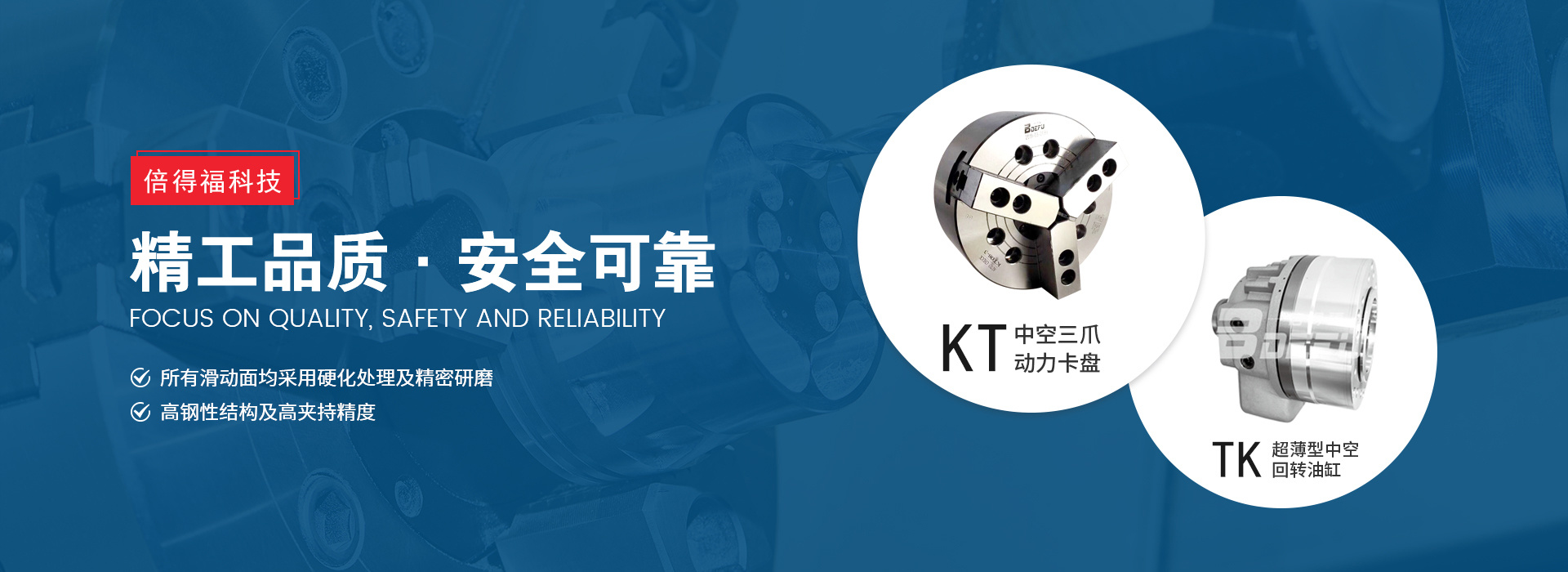Views: 0 Author: Site Editor Publish Time: 2021-11-05 Origin: Site










































As people demand higher and higher work efficiency, hydraulic chucks gradually replace manual chucks and have been widely used. In order to meet the processing requirements of different workpieces, such as rectangular surfaces, cylindrical blank surfaces and other irregular-shaped workpieces, as well as some workpieces with eccentricity between the clamping surface and the processing surface, a four-jaw hydraulic chuck is usually required.
The chuck is a mechanical device used to clamp workpieces on machine tools. It uses the radial movement of three movable jaws evenly distributed on the chuck body to clamp and position the workpieces. The chuck generally consists of three parts: the chuck body, the movable jaw and the jaw driving mechanism.
According to the number of chuck jaws, it can be divided into: two-jaw chuck, three-jaw chuck, four-jaw chuck, six-jaw chuck and special chuck. In terms of power, it can be divided into: manual chuck, pneumatic chuck, hydraulic chuck, electric chuck and mechanical chuck. Structurally, it can be divided into: hollow chuck and medium solid chuck.
This article mainly introduces the four-jaw self-centering chuck and the four-jaw single-acting chuck among the four-jaw chucks. At the same time, the four-claw chuck and the three-claw chuck are compared, and the main differences in structure and application scenarios between the four-claw chuck and the three-claw chuck can be more clearly understood.
Classification of four-claw chucks: one is a four-claw self-centering chuck, and the other is a four-claw single-acting chuck.

Four-jaw chuck
1. Four-jaw self-centering chuck
The full name of the four-jaw self-centering chuck is the manual four-jaw self-centering chuck for machine tools. It consists of a plate body, four small bevel teeth, and a pair of claws. Four small bevel teeth mesh with the coiled wire. The back of the coiled wire has a flat thread structure, and the claws are equally installed on the flat thread. When the small bevel tooth is pulled with a wrench, the coil wire rotates, and the flat thread on its back causes the claw to approach or withdraw from the center at the same time. Because the pitches of the flat rectangular threads on the coiled wire are equal, the four claws move at equal distances and have an automatic centering effect.
Function: The synchronous movement of the four claws is suitable for clamping square and square parts, as well as shaft and disc parts.
Applicable machine tools and accessories: ordinary lathes, automatic CNC lathes, grinders, milling machines, drilling machines and machine tool accessories indexing head rotary tables, etc.
2. Four-jaw single-action chuck
The full name of the four-jaw single-action chuck is the manual four-jaw single-action chuck for machine tools. It is composed of a plate body, four screw rods, and a pair of claws. When working, four screws are used to drive the four claws respectively, so the common four-claw single-acting chuck does not have the function of automatic centering. The four-jaw single-action chuck has only one type of integral jaw. One jaw can move independently and is suitable for clamping eccentric parts and irregularly shaped parts.
Function: Each claw can be moved independently, suitable for clamping eccentric parts and irregular-shaped parts.
Applicable machine tools and accessories: ordinary lathes, automatic CNC lathes, grinders, milling machines, drilling machines and machine tool accessories indexing head rotary tables, etc.

The difference between four-jaw chuck and three-jaw chuck
The difference between a four-claw chuck and a three-claw chuck is that the four-claw chuck is used to clamp square, square parts, and eccentric parts, while the three-claw chuck is mainly used to clamp round parts.
Four-jaw chucks are mainly used in ordinary lathes, automatic CNC lathes, grinders, milling machines, drilling machines and machine tool accessories, and indexing head rotary tables. The four-jaw chuck is suitable for lathe accessories and is used to clamp round, square, or rectangular workpieces for cutting. The four claws of this kind of chuck cannot be linked and need to be pulled separately, so it can also be used to clamp unilateral and off-center workpieces.
